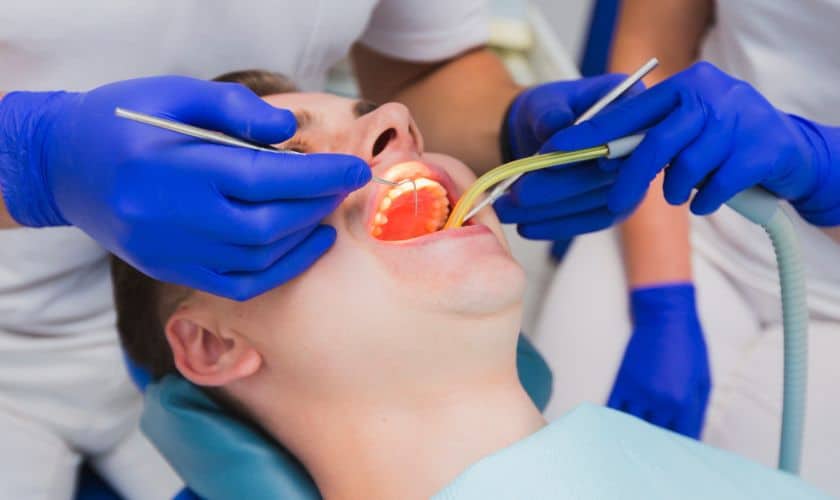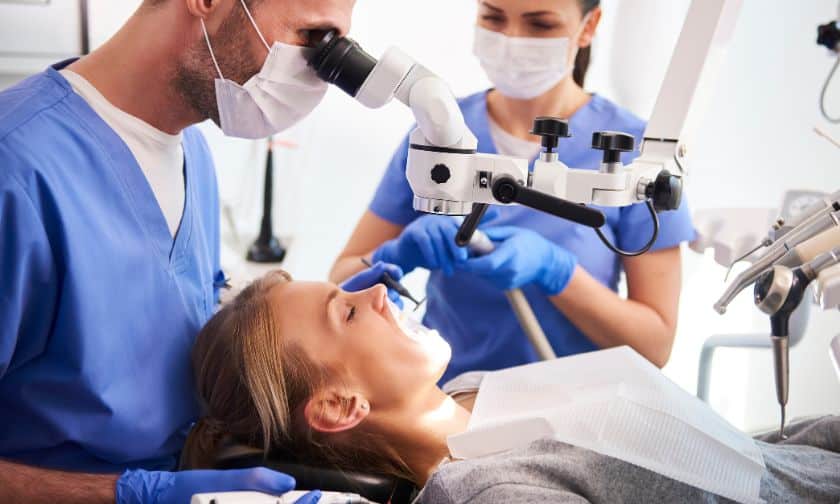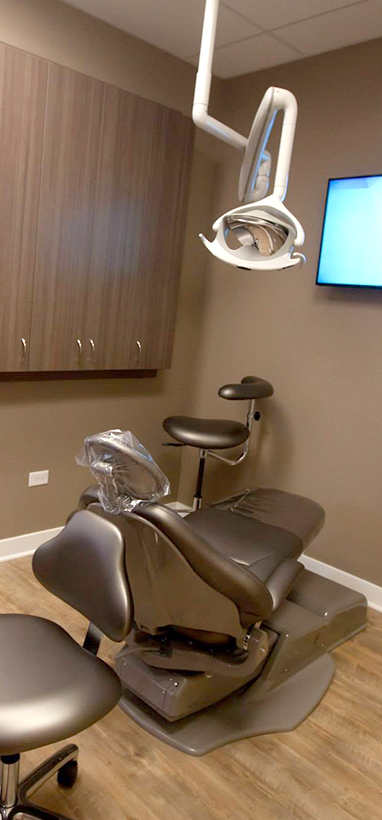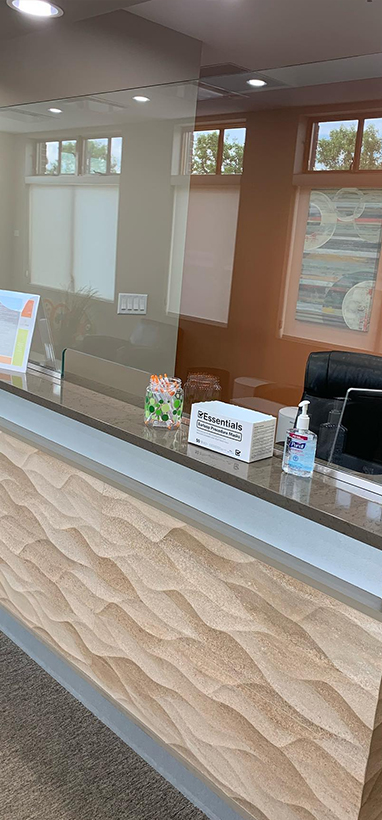1516 Legacy Cir, Naperville, IL 60563
4 Routine Procedures Performed by Oral Surgeons
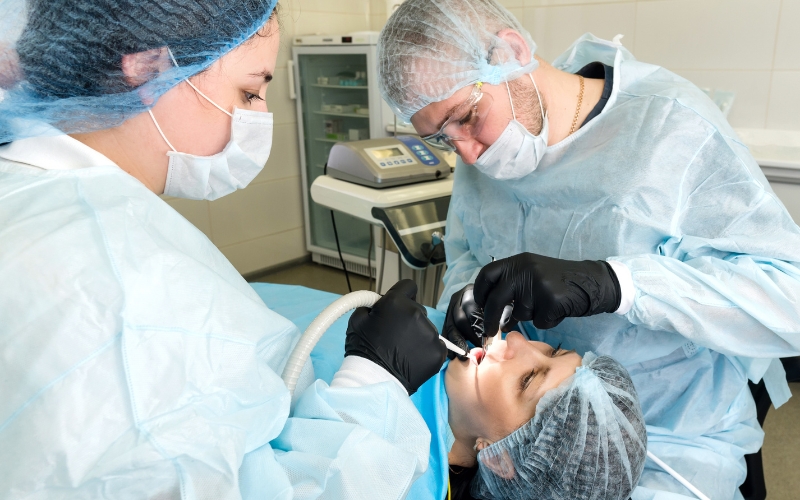
Did you know that over 85% of adults have had their wisdom teeth removed by a surgeon? Oral surgeons are essential to the preservation of general and dental health. They specialize in complex procedures that go beyond the expertise of general dentists.
This blog helps learn about common procedures performed by these surgeons and how you can choose the right surgeon for your needs.
4 Frequently Performed Procedures by Oral Surgeons
Procedure 1: Tooth Extractions
Tooth extractions are procedures to remove teeth that are damaged, decayed, or causing other dental issues. They are necessary for various reasons, including impacted wisdom teeth, severe tooth decay, infection, or overcrowded teeth.
Wisdom teeth that are impacted are very prevalent since they frequently don’t have enough room to erupt correctly, which can cause discomfort, infection, and possibly even harm to nearby teeth.
The extraction process starts with a thorough examination and imaging, such as X-rays, to assess the tooth’s condition and plan the extraction. The patient is given a local anesthetic to make the area numb.
In some cases, especially for impacted teeth or multiple extractions, sedation or general anesthesia may be used to ensure comfort. The oral surgeon delicately removes the gum tissue by making a tiny incision to access the tooth.
It could be necessary to section impacted teeth into smaller pieces to facilitate tooth extraction. The area is cleaned after the tooth is removed, and sutures may be used to promote recovery.
After a tooth extraction, recovery usually takes several days. Anticipate some swelling and discomfort for patients, which can be treated with over-the-counter analgesics and cold packs. Following the post-operative instructions given by the surgeon is crucial. These may include avoiding specific meals, practicing proper dental hygiene, and quitting smoking.
Keeping the extraction site clean and allowing it to heal properly helps prevent complications such as dry sockets, where the blood clot in the extraction site becomes dislodged, causing pain and delaying healing.
Procedure 2: Dental Implants
A permanent remedy for lost teeth is dental implants. For permanent or removable replacement teeth, they act as artificial tooth roots, giving a strong base. By stopping the bone loss that frequently follows tooth loss, implants help retain face shape and preserve the jawbone.
The dental implant process involves several stages. It begins with a consultation and a thorough assessment, including imaging studies like X-rays or CT scans. This aids in the surgeon’s assessment of bone density and implant placement planning.
The next step is the surgical insertion of the titanium implant post into the jawbone. This is done under local anesthesia or sedation. Osseointegration, the process by which the implant merges with the bone over the course of several months, creates a strong foundation.
Once the implant has been integrated, an abutment is placed on the post, and a custom-made crown is attached to complete the restoration.
Among the many advantages of dental implants are better speaking and chewing skills. They provide a natural look and feel, enhancing the overall appearance and boosting confidence.
Because implants do not slip or move like dentures do, they are more comfortable and convenient. Additionally, they help preserve jawbone structure, preventing bone loss and facial changes associated with missing teeth.
Procedure 3: Corrective Jaw Surgery (Orthognathic Surgery)
Corrective jaw surgery, also referred to as orthodontia, treats problems with bite irregularities and jaw alignment. This surgery is often necessary for patients with severe malocclusion (misaligned bite), jaw growth abnormalities, or other structural problems that affect chewing, speaking, and overall facial balance.
The process starts with comprehensive planning, which includes detailed imaging and sometimes 3D modeling to map out the surgical corrections. During the surgery, the oral surgeon makes precise cuts in the jawbones to reposition them into a more functional and balanced alignment.
The bones are then secured in their new positions with plates, screws, or wires. This surgery is performed under general anesthesia and can take several hours, depending on the complexity. Post-operatively, patients might need to stay in the hospital for a short period for monitoring.
Patients can expect significant improvements in bite function, facial symmetry, and overall oral health. The surgery often resolves issues related to chewing, speech, and breathing, enhancing the patient’s quality of life. Recovery involves several weeks of healing, with dietary modifications and follow-up appointments to monitor progress and ensure proper healing.
Procedure 4: Cleft Lip and Palate Repair
Cleft lip and palate repair is a crucial surgical intervention for children born with these congenital deformities. A cleft lip involves a split in the upper lip, while a cleft palate involves a split in the roof of the mouth. These conditions can lead to difficulties with feeding, speech, hearing, and dental development.
The repair process for cleft lip and palate typically involves multiple stages, starting in infancy. The first surgery to repair the cleft lip is usually performed when the baby is around 3 to 6 months old. This surgery aims to close the gap in the lip and improve the shape and function of the mouth.
Cleft palate repair usually follows when the child is between 9 and 18 months old. This surgery involves closing the opening in the roof of the mouth to facilitate normal speech development and feeding. Additional surgeries may be needed as the child grows to address functional and cosmetic issues.
The impact of successful cleft lip and palate repair is profound. It significantly improves the child’s ability to eat, speak, and hear properly. The surgeries also enhance facial appearance, contributing to better social interactions and self-esteem.
Early intervention and ongoing multidisciplinary care, including speech therapy and dental care, ensure the best outcomes for children with these conditions.
Oral surgeons perform critical procedures that enhance dental health and overall well-being. From tooth extractions to corrective jaw surgery, their expertise ensures successful outcomes. If you need any of these procedures, consult a professional. They provide the specialized care necessary for optimal results.




